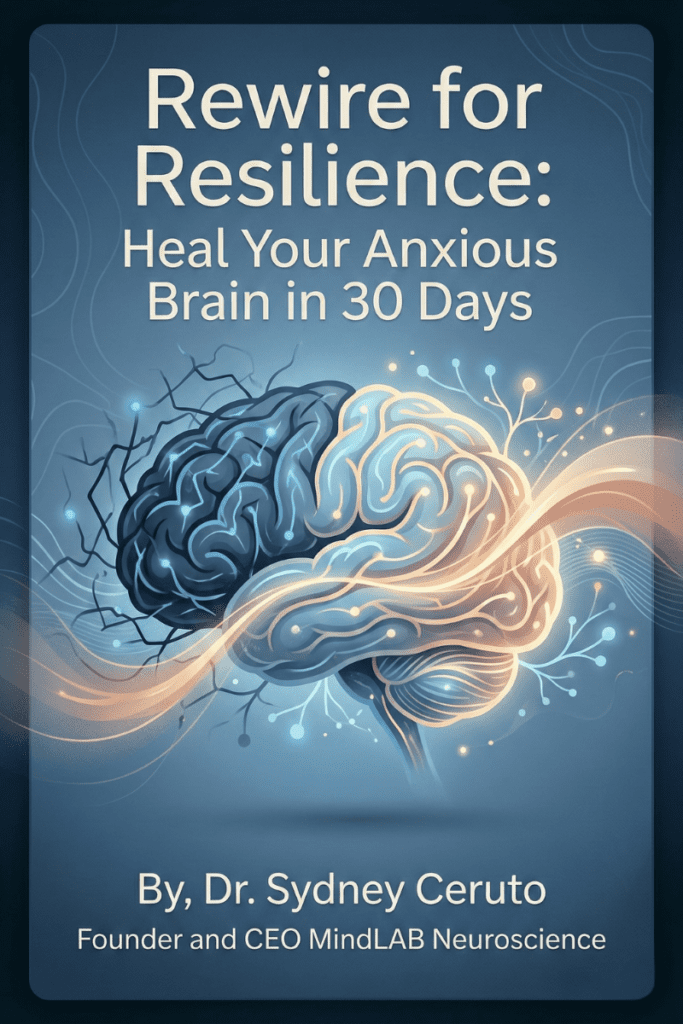In the complex tapestry of modern life, we find ourselves wired to worry. Anxiety has become an unwelcome companion for many, permeating various aspects of our daily existence – from career pressures to social media stress, family responsibilities to global uncertainties. This constant state of alertness raises the question: why are we so prone to anxiety in the modern world?
Our brains, evolved for a vastly different environment, now grapple with an onslaught of stimuli our ancestors never encountered. We’re wired to worry about predators, yet find ourselves anxious over email notifications. Our fight-or-flight responses, once crucial for survival, now activate when choosing what to stream or navigating social gatherings.
This article delves deep into anxiety in the modern world, exploring how our ancient survival mechanisms sometimes misfire in our contemporary environment. We’ll examine how being wired to worry manifests in different areas of life – from the boardroom to the living room, from social media interactions to solitary moments of self-reflection.
Understanding why we’re wired to worry is just the beginning. We’ll also explore how cutting-edge neuroscience-based life coaching can help rewire our brains, utilizing neuroplasticity, to overcome anxiety. These techniques offer powerful tools for managing anxiety in all aspects of modern life, potentially transforming how we navigate our worry-prone world.
By grasping the roots of our wired-to-worry nature and learning to apply neuroscience-based strategies, we can work towards creating a more balanced, less anxious existence in our modern world. Let’s embark on this journey to unravel the complexities of anxiety and discover pathways to resilience in our fast-paced, interconnected lives.
The Evolutionary Roots of Anxiety: Why We’re Wired to Worry
To fully comprehend why we experience anxiety in the modern world, we need to look back at our evolutionary history. Anxiety is not a modern invention but an ancient survival mechanism that has been honed over millions of years.
Imagine our early ancestors living in a world full of predators and unknown dangers. Those who were more cautious and alert were more likely to survive and pass on their genes. This is where our tendency to worry comes from – it’s a built-in alarm system that helped keep our species alive.
Think of anxiety like an overprotective parent. It’s always on the lookout for potential threats, sometimes seeing danger where there isn’t any. In the past, this was helpful. It was better to be too careful than not careful enough when a real threat could mean death.
Over time, this worry system became deeply ingrained in our brains. It’s like a software program that’s been running for millions of years, constantly being updated but never completely rewritten. The problem is, while our environment has changed dramatically in a short time, our brains haven’t had a chance to catch up.

So now, in our modern world, we still have this ancient worry system running in the background. It’s trying to protect us, but it often overreacts to the stresses of modern life – like work deadlines or social media pressures – as if they were life-threatening dangers.Understanding this evolutionary background helps explain why we’re so prone to anxiety today. It’s not a flaw in our mental makeup, but rather an old survival tool that’s struggling to adapt to our new environment.
The Survival Advantage of Anxiety
From an evolutionary perspective, anxiety served as a crucial adaptation that helped our ancestors survive in a world fraught with dangers. Those who were more vigilant and quick to respond to potential threats were more likely to survive and pass on their genes. This evolutionary heritage continues to influence our responses to perceived threats in the modern world.
The Fight-Flight-Freeze Response
Central to our understanding of anxiety is the fight-flight-freeze response, a physiological reaction triggered by perceived threats. This response prepares the body to either confront the danger (fight), escape from it (flight), or remain motionless to avoid detection (freeze).In our ancestral environment, this response was crucial for survival. When faced with a predator like a saber-toothed tiger, our ancestors’ bodies would instantly prepare for action:
- Heart rate and blood pressure increase
- Blood flow is redirected to muscles
- Pupils dilate to enhance vision
- Non-essential functions like digestion are suppressed
This rapid, automatic response could mean the difference between life and death in a dangerous situation.
Modern Threats: Why We React to Emails Like Saber-Toothed Tigers
In our modern world, we rarely face immediate physical dangers like our ancestors did. However, our brains haven’t fully adapted to this new reality. The same neural circuits that once kept us safe from predators now fire over project deadlines, public speaking engagements, or even checking our email.
Our brains are wired to detect and respond to threats quickly, a feature that was crucial for survival in the wild. This ancient alarm system, primarily managed by the amygdala, triggers the fight-or-flight response even when the “threat” is a non-physical one, such as a critical email from a boss or a negative comment on social media.
The problem is that these modern stressors are constant and pervasive. Unlike the occasional predator, we are now bombarded with potential threats throughout the day. This constant state of alertness can lead to chronic anxiety, as our brains remain in a heightened state of vigilance.
Moreover, the uncertainty and unpredictability of modern life exacerbate this response. Whether it’s financial worries, health concerns, or global events, the brain’s threat detection system remains on high alert, scanning for potential dangers. This can lead to a cycle of anxiety where even minor stressors trigger significant worry and stress responses.For more insights on how our brains process modern stressors and techniques to manage this response, check out my article on The Power of Neuroplasticity in Stress Reduction.
The Mismatch Between Ancient Responses and Modern Stressors
Our brains process many modern stressors as if they were life-threatening situations. This mismatch between our evolutionary programming and our current environment can lead to chronic anxiety and stress. Some examples of how this plays out in everyday life include:
- Work Pressure: A looming deadline or critical presentation can trigger the same physiological response as a physical threat.
- Social Media: The constant connectivity and potential for social judgment can activate our threat detection systems.
- Financial Worries: Concerns about money can feel like threats to our survival, triggering anxiety responses.
- Information Overload: The constant influx of news and information can overwhelm our threat detection systems, leading to chronic anxiety.
The Role of the Amygdala in Modern Anxiety
The amygdala, our brain’s threat detection system, doesn’t distinguish between physical dangers and psychological stressors. When activated, it triggers the same physiological responses regardless of the nature of the threat. This is why we can experience intense anxiety symptoms even when facing non-life-threatening situations.
The Impact of Chronic Anxiety on Health and Well-being
While the anxiety response can be helpful in truly dangerous situations, chronic activation of this system can have serious consequences for our health and well-being.
Physical Health Consequences
Chronic anxiety can lead to a range of physical health issues, including:
- Cardiovascular problems
- Digestive issues
- Weakened immune system
- Chronic pain
- Sleep disturbances
Mental Health and Cognitive Impacts
Persistent anxiety can also affect our mental health and cognitive functioning:
- Difficulty concentrating
- Memory problems
- Increased risk of depression
- Impaired decision-making abilities
- Reduced creativity and problem-solving skills

Neuroscience-Based Life Coaching: Rewiring the Anxious Brain
Given the deep-rooted nature of anxiety in the modern world, traditional approaches to managing anxiety often fall short. This is where neuroscience-based life coaching comes in, offering a powerful way to rewire our brains and overcome anxiety for good.
Understanding Neuroplasticity
The key to neuroscience-based coaching lies in the concept of neuroplasticity – the brain’s ability to form new neural connections and reorganize itself throughout life. This means that with the right techniques and consistent practice, we can actually change the structure and function of our brains to reduce anxiety and build resilience.
How Neuroscience-Based Coaching Works
Neuroscience-based life coaching uses evidence-based techniques to target the specific brain regions and neural pathways involved in anxiety. Some key aspects of this approach include:
- Strengthening the Prefrontal Cortex: By engaging in exercises that activate the PFC, we can improve its ability to regulate the amygdala’s response to perceived threats.
- Retraining the Amygdala: Through exposure therapy and other techniques, we can teach the amygdala to respond more appropriately to non-threatening stimuli.
- Enhancing Neuroplasticity: Practices like mindfulness meditation have been shown to increase neuroplasticity, making it easier for the brain to form new, less anxious patterns of thinking and responding.
- Targeting Neurotransmitter Balance: Lifestyle changes and specific exercises can help optimize the balance of neurotransmitters involved in anxiety regulation.
The Benefits of Neuroscience-Based Coaching for Anxiety
By directly addressing the neural underpinnings of anxiety in the modern world, neuroscience-based coaching offers several advantages:
- Long-lasting Results: By changing the brain’s structure and function, the effects of this approach can be more enduring than traditional anxiety management techniques.
- Personalized Approach: Neuroscience-based coaching can be tailored to an individual’s specific anxiety patterns and triggers.
- Empowerment: Understanding the neuroscience of anxiety can help individuals feel more in control of their responses and more confident in their ability to overcome anxiety.
- Holistic Impact: The skills learned through this approach can have positive effects on many areas of life, not just anxiety management.
Embracing Our Anxious Nature While Fostering Resilience
Anxiety in the modern world is a deeply ingrained part of our evolutionary heritage, wired into the very structure of our brains. While it once served a crucial survival function, in our modern world, it often misfires, leading to chronic stress and reduced quality of life. However, by understanding the neuroscience of anxiety and leveraging the brain’s plasticity, we can rewire our neural pathways to foster resilience and overcome excessive anxiety.
Neuroscience-based life coaching offers a powerful tool in this journey, providing evidence-based techniques to change our brains and, by extension, our lives.As we continue to navigate the complexities of our modern world, embracing our “wired to worry” nature while actively working to reshape our neural responses may be the key to finding balance, peace, and fulfillment in the face of life’s challenges.To learn more about neuroscience-based approaches to overcoming anxiety and other mental health challenges, visit mindlabneuroscience.com.





